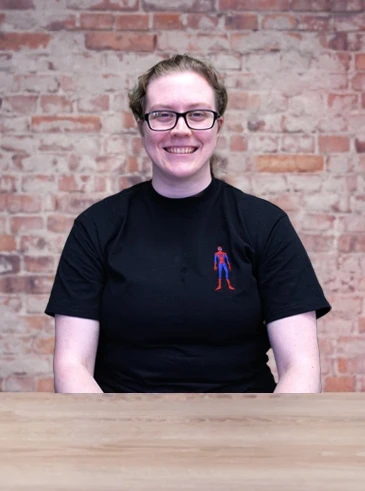Here’s a recap of ‘7 Secrets to Digital Marketing Success’ from “The Buzz” event hosted by 96five at Cloudland last night.
The first thing to remember is that Secrets aren’t locked in stone. They are only snippets of unrevealed information that you can either discover, stumble upon or have revealed. Last night we dove into some ‘secrets’ to look at some foundation points to marketing your business online.
Rewind in your mind and you may remember the movie “The Wizard of OZ” with Judy Garland as Dorothy with her dog, Toto. One of the key storylines in the movie was everyone’s fear of the all-powerful Wizard, until right near the end when little Toto trots over and grabs the curtain in his teeth and pulls back the green cloth to reveal the old man madly pulling levers and pushing buttons to keep the show happening of a ‘magical’ Wizard. It just showed that underneath the things that baffle us on the surface are often the simple basic principles underneath.
Well, when we pulled back the curtain on the Seven Secrets of Digital Marketing Success there was probably a moment of disappointment where you may have felt short-changed. “Why didn’t I find out which is the best phone app to gain 1000 new likes on my Facebook page?” Somewhere in the back of the room, there may have been someone hoping that we could show them how to spend a $1 and make a $10,000. While there will always be the exception to the rule where someone has invented an app that goes viral and then gets sold to some media channel for millions of dollars, the rest of us are running the businesses we started out of a personal passion or the desire to contribute to our family and community.
The real secret, the one that gets lost in the chaos of daily life is to do the basics well. Whatever the marketing channel that is set before us, whether Google AdWords, the new Instagram opportunities or a future yet to be revealed social network, the foundational principles remain. That was at the heart of last nights presentation where we focused on key areas where I find many of my clients don’t have the answers ‘to hand’. So as you work through the PDF of the PowerPoint, take the time to journal your thoughts. Writing your intentions down is a powerful way of living them out.
Luck can’t be measured and luck can’t be replicated but the strategy can!
At a core level if you don’t understand your own business, the brand that represents you, your target customer or the journey they are on to a product or service solution, then you are on the “Good Luck Journey”, not the strategy for success. Remember that luck can’t be measured and luck can’t be replicated, but the strategy can. If your business is to be developed into maturity and scaled for future growth its important to start developing a model based on these key elements now.
Our seven secrets last night walked through these key areas which are needed for the success of any business owner or operator. You may remember I said the two most important words in marketing are “What Next?”. As we walk through these principles, have a pen and paper ready to answer the “What Next?” question.
Table of Contents
ToggleWho is your customer?
Starting off in business, you can feel that sense of either desperation or being the fool-hardy conqueror. When you are trying to feed your family, any business is good business. When you have the head of the conqueror, you believe everybody needs your product or service, and you just need two minutes in a locked room to convince them.
Back at day-to-day living, it’s now time to develop a plan that is profitable for your business. Primarily, your success will come from either finding your ‘bread and butter’ customer that works on volume and then scaling that model, or it can be based on identifying the A+ Grade client who is great to work with, pays better than the average price for high-profit work and pays on time. With these clients, you will need to seek them out and be willing to turn away the clients that don’t match the model.
What Next?
Start by asking yourself who you currently know who matches one of these two customer types. You probably know them well. Now, write down what you know about them and create a customer persona for each like the examples in the presentation PDF linked below.
Do you know your brand identity?
For your business, you probably put a lot of thought into the name, followed by the logo, and now those visual identities are part of your brand in the market. But as the business continues there are a number of other components that are contributing to the recipe we call a brand.
An important take-away from our presentation was to ask the question, “Is your brand inline with my business goals?”. Your business has matured, possibly your product and service range has changed or the quality of work and pricing has risen. Is the brand in sync with your business direction?
What Next?
Take the time to review how customers and prospective customers see, hear and touch your brand. Write some notes on where they connect with you and what ‘impression’ your brand gives of your business as a whole. Now ask yourself who you see as leading competitors in the market and review their brand identity. Are you both moving in the same direction, apart from the USP (Unique Selling Proposition) that makes you you, or do you need to work on bringing your brand into line with your ‘future state’ business goals?
Gold beneath your feet
This was a key message as we highlighted how many businesses spend time and money on attracting new clients without working on either retention through customer loyalty programs or correctly converting the enquiry from people who already walk through your business, whether as a brick-and-mortar store or your website online.
Review your opportunities to invite customers in to engage or to find resale or upgrade opportunities. With the unseen customer, we talked about looking at your website analytics to see if there is traffic you haven’t converted. Talk to your staff to see what can be done to catch the ‘wanderer’ or quiet browser to see how you can engage at their point of need.
For the unlisted customer, start taking down customer details. Use or buy a CRM solution and start developing a customer list you can speak to. With some CRM options free or less than $50/month, it’s an important component of being able to create a conversation with people who already know you, your brand and your offering.
What Next?
It’s time to review the touch points around your business to ask where you are currently missing new customers that are hovering around the outside. How can you bring them in? Write it down. Now look at your current customer base and ask yourself if this is in a form where you are able to make announcements, engage customers in the life of your business or grab that resale or upgrade opportunity.
Digestible content
Life’s fast! Right! And it’s with this understanding that we need to move at the pace of our customers when it comes to those online communications. If I was talking to you at a BBQ and you started to look away or at your watch, then if I was tuned to those social cues, I would wrap up our conversation or use some way of grabbing your attention to refocus the conversation.
When you’re not in front of a client reading or rather scanning your website online, you don’t see those cues and need to keep the conversation flowing. Remember our key mantra in this conversation; “Your website is an introduction, not an education”.
What Next?
Take the time to review your online and even printed content collateral. Ask yourself if you had 2-3 minutes to take the ‘essence’ of the message out of what is on the page, what will stay and what will go? Start being ruthless because you will also have a lot to say. If you are passionate about your business, you can’t help yourself.
Now, ask if the layout and design allow you to glance through the page, finding what is important to the person after information about a product or service, for the user looking for your experience or for the user wanting indications on the service in terms of time, price or warranty. Start writing down what you have discovered and decided.
Don’t let go
Every day, your competition throws a bit of bait out for new customers and then does the same tomorrow and the next day. It’s wasteful in time and money and often isn’t fine-tuned for better results. Start being more intentional in your customer acquisition strategy.
With online tools that tell you when your customers come back to your website, clicked on the link in the email newsletter or left a product in your online shopping cart, you have many ways to re-engage. If you haven’t heard about re-marketing or re-targeting talk to an expert who can develop a campaign in line with your brand that keeps you in front of customers during their research phase so you are then when its time to buy. Its extremely cost effective as you generally are only paying for the click at the start of their journey and the end and not for the ‘impressions’ in between.
What Next?
Look at your customer buying cycle and ask how long it takes for a customer to go from ‘interest’ to ‘intent’. Are there ways you can speed up the process? How do you keep in front of them during the buying cycle with brand positioning that would be a key reason for them to work with your company? If you have a long professional assessment type process involved in your clients coming on-board think about how you can keep seeding your USP into their view.
Where are we?
You do know this, and your accountant should keep you financially accountable, but like the ships captain, if you don’t know where you are, you can’t chart a path to where you want to go. Whether it’s a map for the stars or Google Analytics for your website, you need to have a benchmark for your business performance.
From here, it is also important to ask yourself, “What does success look like?” so that you can start to build the strategy around the step to your business ‘Future State’. It’s time to start writing down a vision for the future and bringing alongside you the metrics to measure improvement.
What Next?
Start with a review of what you do have to hand. Are there reports you don’t read or things you measure but don’t compare to previous periods in the life of the business? From our presentation, you will see that BI (business intelligence) dashboards are becoming more affordable and keep the business performance in front of you. Move to discard reporting that actually doesn’t focus on the key KPIs for your business growth, so your ‘at a glance’ review allows you to make decisions quickly that affect focus and momentum.
Innovate the mouse trap
We finished last night talking about innovation and how many businesses don’t allow for trying new ways of communicating or attracting clients. Our cry was, “Don’t shortchange the experiment”, and we looked at examples like Thomas Edison, who tried 1000x ways to make a light bulb. We have to allow time and finance in our budget, or we restrict our strategy to a tight formula and lose the potential to expand into the one idea that could exponentially change your business.
Like Google and Elon Musk, there are times in your business life where you have to try several ideas then identify the ‘winners’ which you run with and also be willing to drop and run from the ones that just don’t work. Don’t hold on emotionally to ideas! They are just that, and your business needs to be able to adapt through trial and error as well as trial and success.
What Next?
Look at your next business marketing activity with an open mind to ‘testing the market’. Ask yourself, what are 2, 3 or 4 ways we could approach this? Maybe your next step is using different written copy for your ads or targeting different audience groups with the same message to see which responds. Write an idea down now for a website ‘call to action’ or the copy for a brochure or radio ad, and then write a totally different version aimed at a different outcome. If this isn’t your skill, then right now is the time to engage the expertise you need to bring this creativity into your business marketing.
In your business, there is one secret that isn’t part of the seven we have just covered, and that is you. Your health, clarity of mind and passion for what you do is central to a successful business in any capacity. Remember our illustration at the end where I talked about being in ‘first aid’ training as a young St. John Ambulance cadet. I was trained to walk into a situation and know that the loudest injured patient is probably not the most urgent. I would regularly win awards because I ‘learned’ to look for the quiet patients and work on them first.
As you start to look at the foundations and needs of your business, first give yourself the time and space to see the big picture. Even going away from the office, the phone, the staff in order to look at these things objectively will put you in good stead, and if you need that weekend at the beach, the bush or the art gallery to clear your head, then do it.
I’d love to hear how these secrets now revealed help grow your business.
Feel free to connect with me online.
Facebook: https://www.facebook.com/theandrewpitchford
LinkedIn: linkedin.com/in/andrewpitchford
Twitter: twitter.com/andrewpitchford
Instagram: instagram.com/andrew.pitchford
Blog: andrewpitchford.com
Download the 96five The Buzz Presentation (5.5mb)











